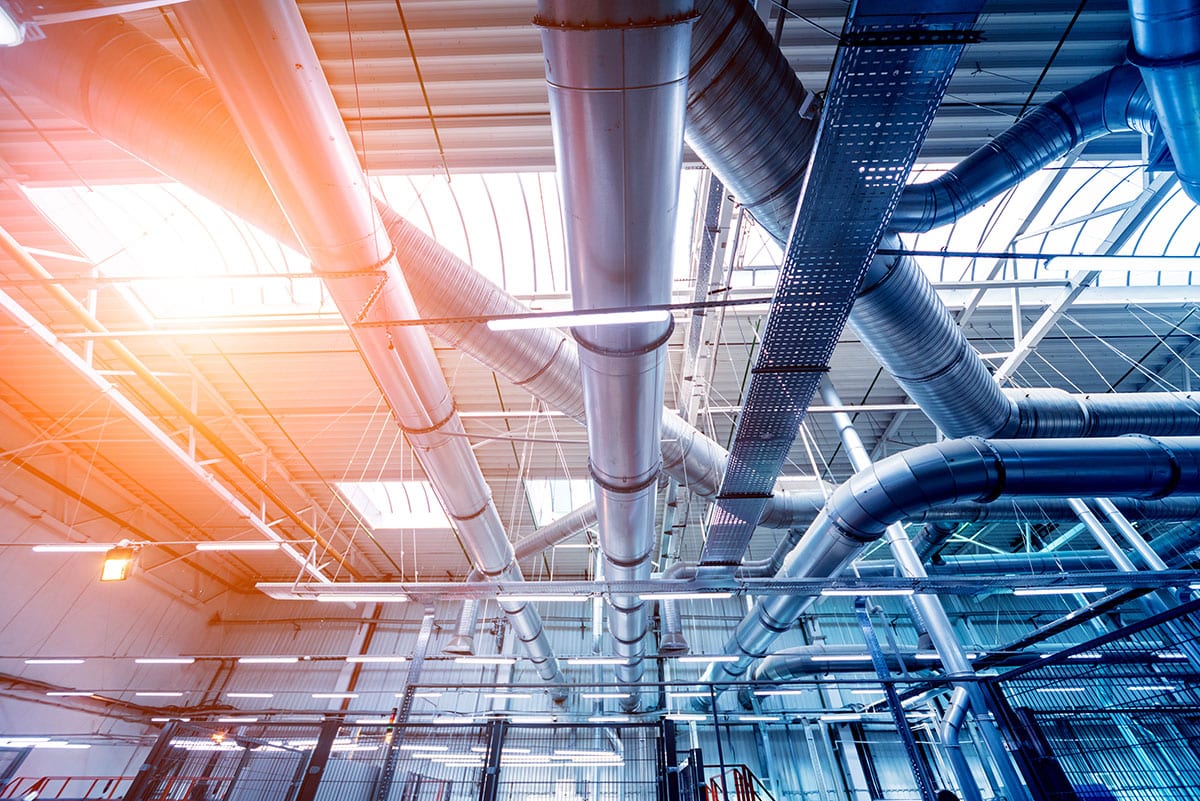HVAC Zone Damper and Control System

HVAC Zone Damper Control usually comes in two types: “Pressure Dependent” and “Pressure Independent”. They are typically used for controlling the temperature in a single room or a small area.
Pressure Dependent Damper Control
A “Pressure Dependent” Damper Control is a controllable damper in the ductwork. It can either be a 2-position damper (with an open and closed setting) or a modulating damper that allows the user to vary the amount it opens.
A thermostat, or space temperature sensor along with a controller, would send either an open/close signal or modulating signal to the damper actuator based upon the sensed zone temperature going away from the zone setpoint.
This type of control is called pressure-dependent because the zone control does not know how much airflow is being supplied to the zone.
As more dampers on the air handler open, the airflow is reduced because the air is flowing into the other zones. The opposite occurs when other zone dampers close, the open damper will receive more air so the grill can at times be loud for a lot of airflows or seem like there is no air flowing at all.
If the air handler, or AC unit, can also supply heated air then the zone control must compare the temperature of the air in the duct against the zone temperature and verify it is useable for what the zone requires. In other words, if the space is warm and the supply air is cold then the supply air is useable to cool the space so the damper would be allowed to open to cool the space. The opposite would occur if the space were cold, and the supply air is warm, the damper would be allowed to open however if the space is cold, and the supply air is cold the damper would remain at its minimum position.
Pressure Independent Damper Control
A “Pressure Independent” Damper Control will have a modulating controlled damper and an airflow measuring device. These are often part of a VAV Box (Variable Air Volume Terminal Unit), but they can also be a simple damper and airflow measuring device installed in the ductwork.
This type of control is more sophisticated than a pressure-dependent control because a controller reads the airflow and modulates the damper to control the airflow to a setpoint. The setpoint is varied from a minimum to a maximum based upon the zone temperature deviation from the zone temperature setpoint. With this type of control, the airflow is much more regulated and only varies based upon the zone temperature changing from the zone temperature setpoint.
If the air handler or AC unit can also supply heated air, then the zone controller must compare the temperature of the air in the duct against the zone (space) temperature and verify it is useable for what the zone requires. In other words, if the space is warm and the supply air is cold then the supply air is useable to cool the space so the CFM setpoint can increase to cool the space. If the supply air is warm, then the CFM setpoint would stay at the minimum CFM setpoint. The opposite would occur if the space were cold, and the supply air is warm, the CFM setpoint would be allowed to increase to warm the space. However, if the space is cold and the supply air is cold the CFM setpoint would remain at its minimum setting.
The “Pressure Independent” Damper Control can have different CFM setpoints for heating mode and cooling mode.
In summary:
“Pressure Dependent” Damper Controls have two different types of dampers. 2-position dampers, with open and close settings, or modulating dampers that let the user vary how much it opens. It creates a zone setpoint based on the sense zone temperature. These systems are outdated because the zone control does not know how much airflow is being supplied to the zone. If the airflow is reduced, because the air is flowing into the other zones, the grill can sound loud or seem like there is no air flowing.
“Pressure Independent” Damper Controls have a modulating controlled damper and an airflow measuring device. These damper controls are more sophisticated because the controller reads the airflow and modulates the damper to control the airflow to a setpoint. The airflow is better regulated and only varies based upon the zone temperature changing from the zone temperature setpoint.
At Unify Energy Solutions, we design customized, cost-effective solutions that streamline operations and keep your facilities comfortable and safe.
Contact us today to get started on an efficient and scalable building automation system!